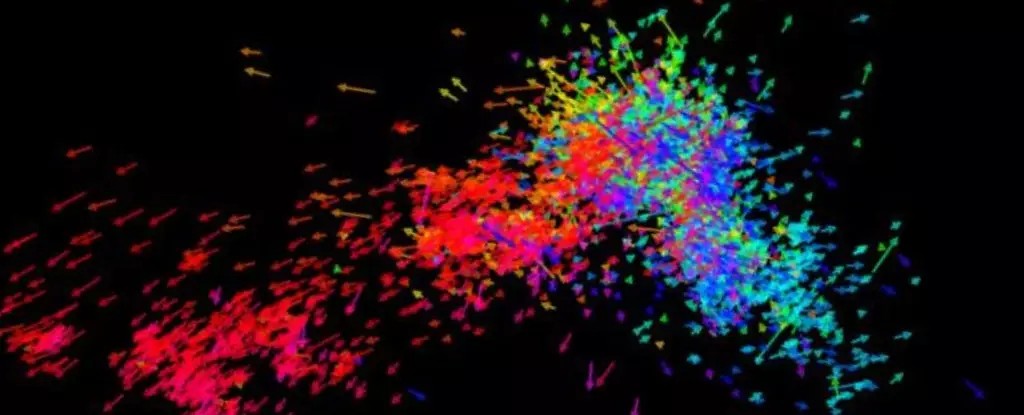In recent years, the intricacies of our universe have captivated the minds of astronomers and astrophysicists. One of the most intriguing phenomena in this cosmic tale happens in the Southern Hemisphere, where two dwarf galaxies—the Large Magellanic Cloud (LMC) and the Small Magellanic Cloud (SMC)—dance around our Milky Way. Researchers at Nagoya University, led by Satoya Nakano and Kengo Tachihara, have unveiled alarming evidence suggesting that the SMC is possibly experiencing a catastrophic disintegration due to the gravitational embrace of its larger cousin, the LMC. This discovery not only has implications for the SMC’s fate but also reshapes our understanding of galactic interactions across the universe.
Uncovering Unexpected Patterns in the Stars
The study focused on a fascinating aspect of galactic dynamics. The researchers examined the movement of approximately 7,000 massive stars within the SMC, each stellar giant boasting a mass over eight times that of our Sun. These stars, considered markers for hydrogen-rich regions, exhibited movements that defy conventional expectations. Some stars are migrating toward the LMC, while others are veering away, indicating an unsettling gravitational tug-of-war between these two galaxies.
This behavior raises important questions about the gravitational influence exerted by the Milky Way and its satellite galaxies. Observations reveal that the SMC is under a relentless tidal force questioning its very structural integrity. Such insights draw attention to the broader complexities of galaxy formation and evolution, suggesting that even smaller galaxies like the SMC can play pivotal roles in understanding the cosmic landscape.
A Lack of Rotation: A Puzzle for Astronomers
Adding to the enigma, the team’s findings highlighted a curious absence of rotational movement among the SMC’s massive stars. Generally, stars within galaxies progress in unison with their surrounding gas clouds, weaving a synchronized tapestry of motion. However, the SMC’s lack of rotational pattern suggests something more profound—a disconnect that hints at the possibility that the gas surrounding these stars may not share the same rotational momentum.
This revelation is groundbreaking; it forces astronomers to reconsider the SMC’s mass calculations in relation to both the LMC and our own Milky Way. It is a vital reminder of how interconnected our galaxy is and the unique dynamics that govern the movement of celestial bodies.
The Magellanic Clouds: A Portal to Primordial Galaxies
The implications of this research extend beyond mere academic curiosity. The SMC, with its characteristics reminiscent of primordial galaxies from the early universe, serves as a living laboratory for the processes governing galaxy formation and behavior. These misunderstood clouds harbor invaluable clues that could unravel the timeline of cosmic evolution.
By delving into the motions of stars within the SMC and its interaction with the LMC, researchers lay the groundwork for a deeper understanding of star formation coupled with galactic dynamics. This connection could ultimately allow us to piece together the puzzle of how galaxies evolve over billions of years, offering a glimpse into the complex history of the universe.
Galactic Disruption: A Mirror to Our Cosmic Future
The SMC’s current turmoil also poses important questions for our future understanding of catastrophic events in the cosmos. The possibility of the SMC’s destruction evokes questions regarding its long-term fate—will it succumb to the gravitational pull, merging with the LMC, or could there be a recovery path?
The gravitational interactions among these dwarf galaxies serve as a microcosm for larger galactic processes occurring throughout the universe. As we expand our collective knowledge, the ripple effects of these findings could lead to revolutionary insights not only about our cosmic neighborhood but about the broader architectures of galaxies themselves.
These findings signify an exciting era for cosmic exploration, urging us to challenge established norms and assumptions. The struggle of the SMC against the forces exerted by the LMC is more than just a tale of survival; it’s a testament to the dynamic and ever-changing nature of the universe. As we continue our journey into these celestial mysteries, we find ourselves on the precipice of newfound revelations, poised to further illuminate the story of our cosmos.

